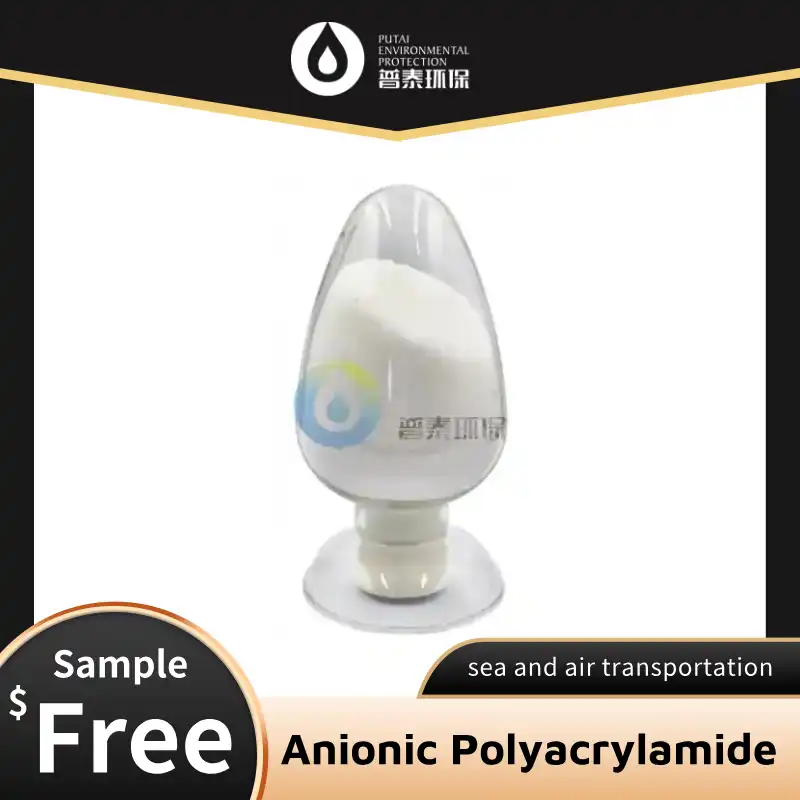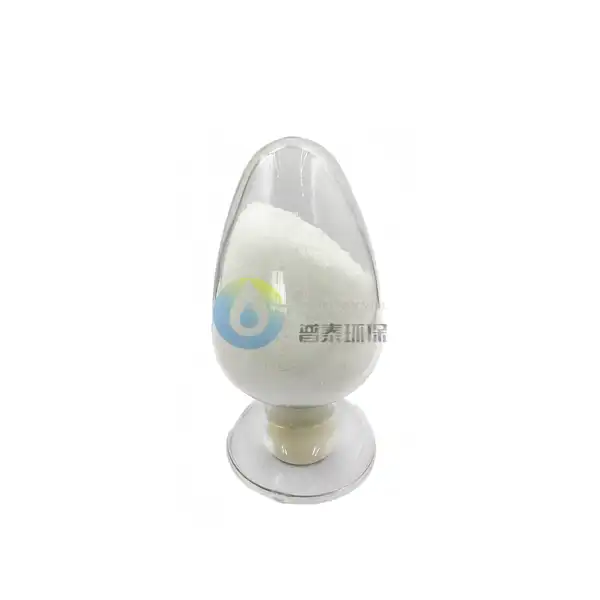What Functional Groups Give Cationic PAM Its Positive Charge?
The hallmark of cationic PAM is its positive charge, which is crucial for its flocculation capabilities. This positive charge stems from specific functional groups incorporated into the polymer backbone. Let's examine these key components:
Quaternary Ammonium Groups
The primary source of cationic PAM's positive charge is the quaternary ammonium groups. These groups consist of a central nitrogen atom bonded to four alkyl or aryl substituents. The positive charge on the nitrogen atom is permanent and pH-independent, making cationic PAM effective across a wide range of pH conditions.
Tertiary Amine Groups
Some cationic PAM formulations may also include tertiary amine groups. These groups can become protonated in acidic conditions, contributing additional positive charges to the polymer. The presence of tertiary amines can make the polymer's charge density responsive to pH changes, allowing for fine-tuning of flocculation performance in different environmental conditions.
Imidazolium Groups
In certain specialized cationic PAM variants, imidazolium groups may be incorporated. These heterocyclic structures provide a robust positive charge and can enhance the polymer's thermal stability and resistance to hydrolysis.
The strategic placement and distribution of these cationic functional groups along the polymer chain play a crucial role in determining the overall charge density and flocculation efficiency of the cationic PAM.
The Role of Quaternary Ammonium in Cationic PAM's Performance
Quaternary ammonium groups are the cornerstone of cationic PAM's flocculation prowess. Let's delve into how these groups contribute to the polymer's exceptional performance:
Electrostatic Interactions
The permanent positive charge of quaternary ammonium groups enables strong electrostatic interactions with negatively charged particles in wastewater. This attraction is the primary mechanism by which cationic PAM initiates the flocculation process, drawing suspended particles together to form larger aggregates.
Charge Neutralization
As cationic PAM molecules interact with suspended particles, the quaternary ammonium groups neutralize the negative surface charges of these particles. This charge neutralization reduces the electrostatic repulsion between particles, allowing them to come closer together and form flocs.
Bridging Mechanism
The long polymer chains of cationic PAM, adorned with quaternary ammonium groups, can effectively "bridge" multiple particles together. This bridging mechanism creates larger, more stable flocs that are easier to remove from the water through sedimentation or filtration processes.
pH Stability
Unlike some other cationic groups, quaternary ammonium maintains its positive charge across a wide pH range. This pH-independent behavior ensures that cationic PAM remains effective in various water treatment scenarios, from acidic industrial effluents to alkaline process waters.
Resistance to Hydrolysis
Quaternary ammonium groups exhibit strong resistance to hydrolysis, which is the breakdown of chemical bonds in the presence of water. This stability ensures that cationic PAM maintains its flocculation performance over extended periods, even in aqueous environments.
The synergistic effects of these quaternary ammonium-driven mechanisms contribute to the robust and versatile flocculation capabilities of cationic PAM in diverse water treatment applications.
How Does Molecular Weight Influence Cationic PAM's Flocculation Efficiency?
The molecular weight of cationic PAM is a critical factor that significantly impacts its flocculation performance. Let's explore how different molecular weight ranges affect the polymer's behavior and efficiency:
Low Molecular Weight (LMW) Cationic PAM
LMW cationic PAM typically has a molecular weight range of 10^4 to 10^6 Daltons. These polymers exhibit:
- Rapid dissolution in water
- Faster diffusion and adsorption onto particle surfaces
- Primarily charge neutralization-based flocculation
- Smaller, more compact flocs
- Better performance in high-shear environments
LMW cationic PAM is often preferred in applications where rapid flocculation is required or where the treated water will undergo subsequent filtration processes.
High Molecular Weight (HMW) Cationic PAM
HMW cationic PAM typically has a molecular weight range of 10^6 to 10^7 Daltons or higher. These polymers offer:
- Slower dissolution but enhanced bridging capabilities
- Formation of larger, more voluminous flocs
- Improved settling characteristics of flocculated particles
- Higher efficiency in low-dosage applications
- Better performance in low-shear environments
HMW cationic PAM is particularly effective in applications where gravity settling is the primary separation method, such as in clarifiers or thickeners.
Optimizing Molecular Weight for Specific Applications
The ideal molecular weight for a given application depends on various factors:
- Particle size and charge density of suspended solids
- Ionic strength and pH of the water
- Shear conditions in the treatment system
- Desired floc characteristics and separation method
In many cases, a blend of different molecular weight cationic PAM polymers can provide optimal flocculation performance across a range of conditions.
The Impact of Polydispersity
Polydispersity, which refers to the distribution of molecular weights within a polymer sample, also plays a role in flocculation efficiency. A polymer with a broader molecular weight distribution may offer more versatile performance across different particle sizes and flocculation conditions.
Molecular Weight and Dosage Considerations
Generally, higher molecular weight cationic PAM requires lower dosages to achieve effective flocculation. However, the optimal dosage must be carefully determined through jar testing and pilot trials to avoid overdosing, which can lead to re-stabilization of particles and poor flocculation performance.
Understanding the interplay between molecular weight and flocculation mechanisms allows water treatment professionals to select the most appropriate cationic PAM for their specific application, optimizing both performance and cost-effectiveness.
Advanced Molecular Engineering Techniques
Recent advancements in polymer science have led to the development of novel cationic PAM structures with enhanced performance characteristics:
- Block Copolymers: These polymers feature distinct segments of varying charge density or hydrophobicity, allowing for tailored interactions with different types of suspended particles.
- Star-Shaped Polymers: Branched structures that offer increased surface area for particle interaction while maintaining good solution properties.
- Graft Copolymers: Cationic side chains grafted onto a neutral or anionic backbone, providing a unique balance of charge distribution and molecular flexibility.
These innovative molecular architectures expand the capabilities of cationic PAM, enabling more efficient and targeted flocculation in complex water treatment scenarios.
Environmental Considerations in Cationic PAM Design
As environmental regulations become increasingly stringent, the chemical structure of cationic PAM is being optimized for improved biodegradability and reduced environmental impact. This includes:
- Incorporation of biodegradable linkages within the polymer backbone
- Development of bio-based monomers for more sustainable polymer synthesis
- Optimization of charge density to minimize residual polymer in treated water
These eco-friendly innovations ensure that cationic PAM remains a viable and responsible choice for water treatment applications in the face of growing environmental concerns.
The Future of Cationic PAM Structure and Performance
Ongoing research in the field of polymer chemistry continues to push the boundaries of cationic PAM performance. Some exciting areas of development include:
- Stimuli-Responsive Polymers: Cationic PAM that can change its conformation or charge density in response to external stimuli such as temperature or pH, allowing for "smart" flocculation systems.
- Nano-Engineered Structures: Incorporation of nanoparticles or creation of nano-scale polymer architectures to enhance flocculation efficiency and selectivity.
- Hybrid Organic-Inorganic Systems: Combining cationic PAM with inorganic components to create synergistic flocculation effects and improved sludge properties.
These advancements promise to further enhance the versatility and effectiveness of cationic PAM in addressing complex water treatment challenges.
Conclusion
The chemical structure of cationic PAM is a masterpiece of molecular engineering, carefully designed to optimize flocculation performance in diverse water treatment applications. From the strategic placement of quaternary ammonium groups to the fine-tuning of molecular weight distributions, every aspect of cationic PAM's structure contributes to its exceptional ability to clarify water and remove suspended solids.
As water treatment challenges continue to evolve, so too will the chemical structure of cationic PAM. The ongoing research and development in this field promise even more efficient, environmentally friendly, and versatile flocculants in the future.
For those seeking high-performance cationic PAM solutions for their water treatment needs, Xi'an PUTAI Environmental Protection Co., Ltd. offers a comprehensive range of cutting-edge flocculants. With over 20 years of experience in the production, sales, and R&D of water treatment chemicals, PUTAI is at the forefront of innovation in this critical field. Our team of experts can help you select the optimal cationic PAM formulation for your specific application, ensuring superior flocculation performance and cost-effectiveness.
To learn more about our advanced cationic PAM products and how they can improve your water treatment processes, please contact our sales team at sales@ywputai.com. Let us help you achieve cleaner water and more efficient operations with our state-of-the-art flocculant solutions.
References
1. Zhang, L., et al. (2021). "Advances in Cationic Polyacrylamide Synthesis and Applications for Enhanced Flocculation." Journal of Water Process Engineering, 40, 101890.
2. Bolto, B., & Gregory, J. (2007). "Organic polyelectrolytes in water treatment." Water Research, 41(11), 2301-2324.
3. Yang, Z., et al. (2019). "The effect of molecular weight on the flocculation properties of cationic polyacrylamide." Polymers, 11(7), 1154.
4. Lee, C. S., et al. (2014). "A review on application of flocculants in wastewater treatment." Process Safety and Environmental Protection, 92(6), 489-508.



